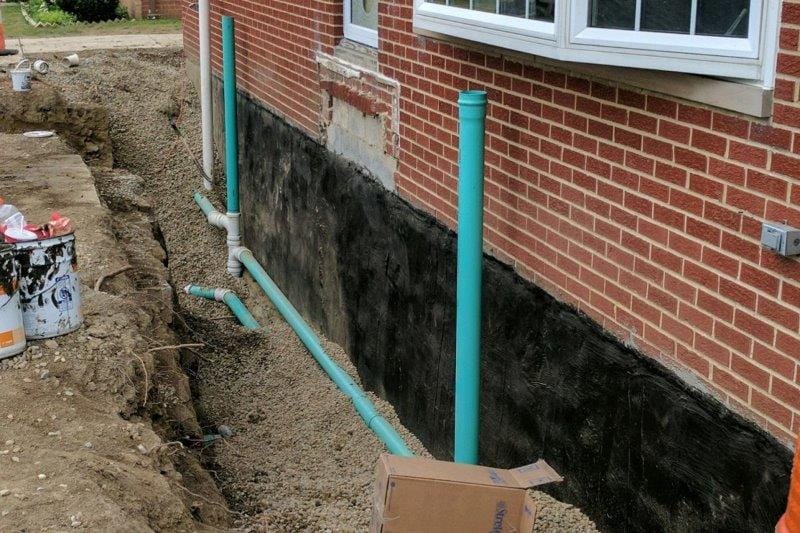The Ultimate Guide To Best Basement Waterproofing
The Ultimate Guide To Best Basement Waterproofing
Blog Article
6 Simple Techniques For Best Basement Waterproofing
Table of ContentsThe Ultimate Guide To Best Basement WaterproofingMore About Best Basement WaterproofingSee This Report about Best Basement WaterproofingLittle Known Questions About Best Basement Waterproofing.The Single Strategy To Use For Best Basement Waterproofing
AdvantaClean's trained experts and technicians will find the water source. If wall or slab fractures are present, we will infuse polyurethane and epoxies right into the fractures and secure the compromise, stopping further moisture from going into.Installing basement air flow systems, conditioning systems, or cellar dehumidifier systems to get water out of your basement. Choosing AdvantaClean's cellar waterproofing services is a reliable way to treat wetness and protect against mold and mildew from compromising the framework of your home and the wellness of your family.
If there's condensation on the outside of the foil, you have high moisture in your cellar. If the aluminum foil has condensation on the inside surface area (following to the wall), the soil around your home may be naturally damp from a high water table or poor dirt water drainage.
You can waterproof just your interior walls, which may address the problem. Once they dry, they adhere permanently to concrete and stonework walls.
Little Known Facts About Best Basement Waterproofing.
Concrete water-proof finishes can't be used to previously painted surface areas; inspect the label. Known as densifiers, they are ideal only for walls that haven't been repainted or sealed.
You clean, roll, or spray it on a lot more thickly one gallon covers just 75 square feet, not the 300 square feet normal with standard paint. Waterproof paint is fine for do it yourself application. You can use it over repainted surfaces, and paint over it once it's healed (one gallon costs $37).
It can set you back $10,000 to $15,000, relying on the job required. Outside waterproofing involves excavating all over your home fully depth of the structure wall surfaces, then mounting a water-proof coating or membrane covered by drain panels. The panels give a very easy path for water to flow to an outside French drain at the end of your structure.
The Basic Principles Of Best Basement Waterproofing
A basement without waterproofing is kind of like that. Your basement doesn't desire to go through a rainstorm without proper protection just as much as you do not want to.

Exterior waterproofing is a waterproofing method that involves sealing your home from the outside. It's sort of like a moat around a castle. It includes excavating a trench around your entire home to the structure (concerning 8 to 10 feet down). The structure walls are after that cleaned up, secured, and covered with a water resistant membrane or sealant.
The 15-Second Trick For Best Basement Waterproofing
It's an extra involved process that requires excavating up your lawn, which is costly and taxing. Exterior waterproofing entails removing every little thing bordering your house, including verandas, driveways, sidewalks, landscape design, air conditioner systems, decks, and so forth. If any of the job was done inaccurately and water is still entering your cellar, there isn't much you can do to fix or repair it.
Inside basement waterproofing entails waterproofing from the within. Any water that leaks into your cellar is redirected before it touches your floor.
It's a reliable approach to waterproof your cellar. The disadvantage of indoor cellar waterproofing primarily has to do with the installment procedure.
The smart Trick of Best Basement Waterproofing That Nobody is Talking About
Finally, exterior and interior cellar waterproofing are both efficient techniques of safeguarding your home from water damage. Outside waterproofing produces a barrier my sources that protects against water from entering your home, while indoor waterproofing reroutes water that does enter your home. And it is very important to keep in mind that exterior waterproofing is a pricey and turbulent setup process when contrasted to interior waterproofing.
Whichever approach you pick, make certain you select a dependable and trustworthy service provider for the work. Both methods require knowledgeable employees to take care of the task. If you have any concerns concerning cellar waterproofing, please get to out to us. And if you remain in our service location and have water in your cellar, call us for a free, no-obligation home inspection.
You can submit our type right here. Best Basement Waterproofing, begin a chat in the bottom right-hand edge, or call us at 1-800-827-0702
Report this page